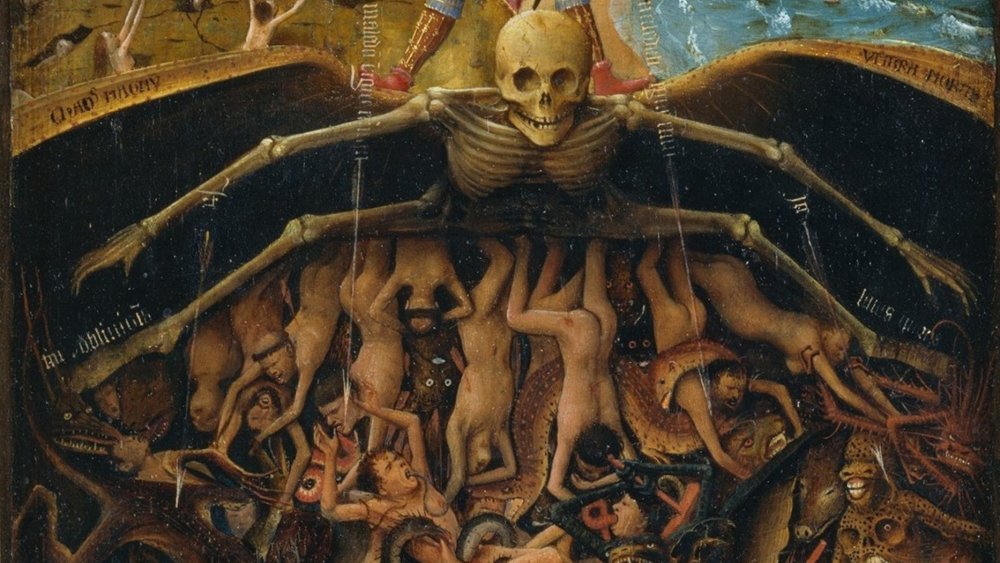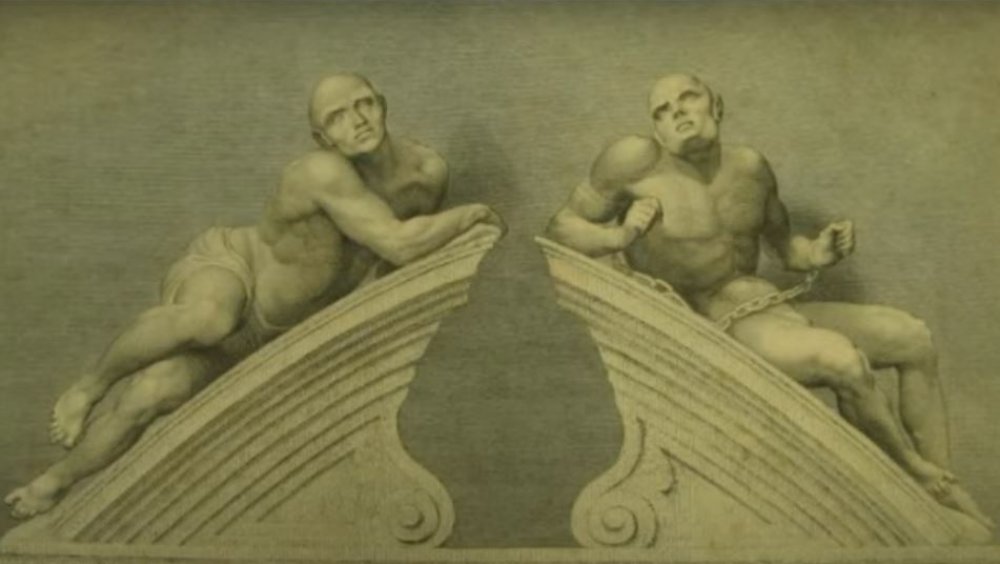The Crazy True Story Of Bedlam: The Bethlem Royal Hospital
"My fifteen shilling a week clerk, with a wife and family, yet you babble about 'Merry Christmas.' I'll retire to Bedlam." — Ebeneezer Scrooge, A Christmas Carol (1843), Charles Dickens.
Chaos. Mayhem. Pandemonium. Bedlam. All incredibly strong words that evoke powerful imagery of a hellish brew of nightmares and lunacy. If the word "pandemonium" was popularized by Milton's 1667 Paradise Lost, about the Biblical story of the Fall of Man (note the word "demon"), it might not be too surprising to see similar origins in other words. But while Pandæmonium is a fictional "high capital of Satan and all of his peers," per Etymonline, Bedlam was not. Bedlam was an honest-to-goodness place. Ostensibly a hospital, in reality it was a mental asylum and sanatorium, built in 1676, less than 10 years after Milton released Paradise Lost. Bedlam was a place far more insane and chilling even than the most brutally savage fiction.
Bethlem Hospital was founded in the 13th century as a dedication to St. Mary of Bethlehem (abbreviated over time to Bethlem) in London, England, near Bishopsgate, an area which can be still be visited on the city's east side. It may have started in a truly Christian way, as a haven for the downtrodden with nowhere to go, as described by the BBC, but it evolved into a medieval "healthcare facility" (we all know how fantastic those were), and eventually became one of the first institutions to focus on cordoning off the "mad" and "lunatic."
The roar of suffering and beggars
"The country gives me proof and precedent of Bedlam beggars, who, with roaring voices, strike in their numb'd and mortified bare arms pins, wooden pricks, nails, sprigs of rosemary." — Edgar, William Shakespeare's King Lear (1606). These words summarize exactly what Bedlam became, and why we use "bedlam" as a common noun nowadays. The outside of Bedlam was comprised of heavy, ornate architecture and walking pathways between gardens. Inside, though, the palatial structure creaked, buckled, and groaned under the weight of more than madness. Twin gargoyle-like statues — "melancholy" and "raving," thought to be the two halves of mental illness — lay perched above the front doors to Bedlam, presaging precisely what waited inside.
Occupants were chained up, brought straw for bedding, and whipped into submission. Visitors, which by 1681 reached nearly 100,000 a year, walked within Bedlam to view the civic separation of the sane and insane. London took pride in Bedlam, and it became iconic amongst the media of the day, in an almost mythic way. The most difficult patients were "stark Bedlam mad," and poor people who faked insanity for a roof and some food instead of being sent to prison were called "Tom o'Bedlams."
In 1815 the facility was completely, and thankfully, torn down, reports the BBC. Now, the health organization runs a state-of-the-art hospital in Beckenham, including a museum for the old, tortuous landmark that was once Bedlam.

